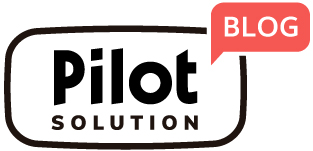Generating and managing leads is a competitive advantage for any dealership. But what are the differences between these two actions? We tell you about it here!

In today’s market it is vital for dealers to know how to increase the conversion rate and improve their ROI on their sales. This challenge is not only due to lead generation: it is very strongly linked to the management of your potential clients.
There are many dealers who have realized that to grow and maintain their sales level they must have a continuous lead acquisition program, not only working their portfolio in an intelligent way, but also generating campaigns on different platforms, such as e-commerce, social networks and e-mail marketing. It is very important to understand that to improve results, only the acquisition is not enough. The management of potential clients by commercial teams is the key.
What should I consider for my investment in lead management?
- Many dealerships generate a much higher volume of leads than their sales teams can handle. This not only means a higher expense, but also, potential customers will not be satisfied with the service, something that directly undermines the company.
- Better preparation of resources for this new digital normality. Invest in technologies, such as automated online communication and service, digital stock, e-commerce, artificial intelligence, digital marketing campaigns, etc.
- Better campaign segmentation by marketing departments and better content in their campaigns so that the leads that arrive are of better quality, even if the quantity is lower.
- Work with small call centers that provide primary care and then derive hot leads to the sales force for closure.
- Budget all your campaigns and correctly measure ROI to focus your efforts and investments.
Steps you must follow to manage your leads and have an optimal sales performance:
- Generation: generation of prospects and conversion into potential clients.
- Classification: qualification, evaluation and scoring of leads. This can be done through a call center.
- Nurture: cultivate and prepare leads from the earliest stages of the funnel to the close of the sales cycle.
- Distribution: distribute or deliver leads to sales.
- Follow-up: process of follow-up of the sales area to evaluate the passage of the lead from one stage to another, until reaching the purchase. In this step you can use the automatic “no purchase” rules to detect deviations from a bad seller’s withdrawal.
- Report: reports to make the management of leads and their results transparent, which will allow the improvement of the entire process.
Lead tracking is used to understand the nuances of their needs and the timelines they manage to make a decision and then assess how to accelerate a sale. If it usually takes a month to make a decision, you should extend your actions to feed them relevant information and keep them engaged.
This is possible to visualize in Pilot, since we save the number of days that a seller takes to sell or to withdraw. You will be able to understand their tracking pattern and how much effort they put into their clients.
Taking this approach to contact management in Pilot will save your sales force time and accelerate opportunities that really pay off.
